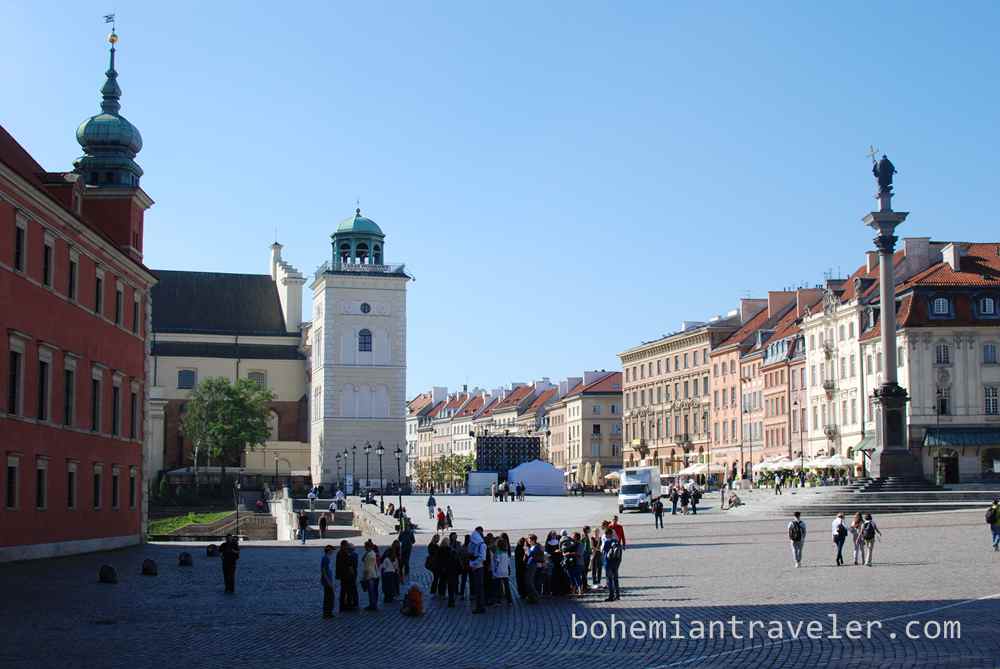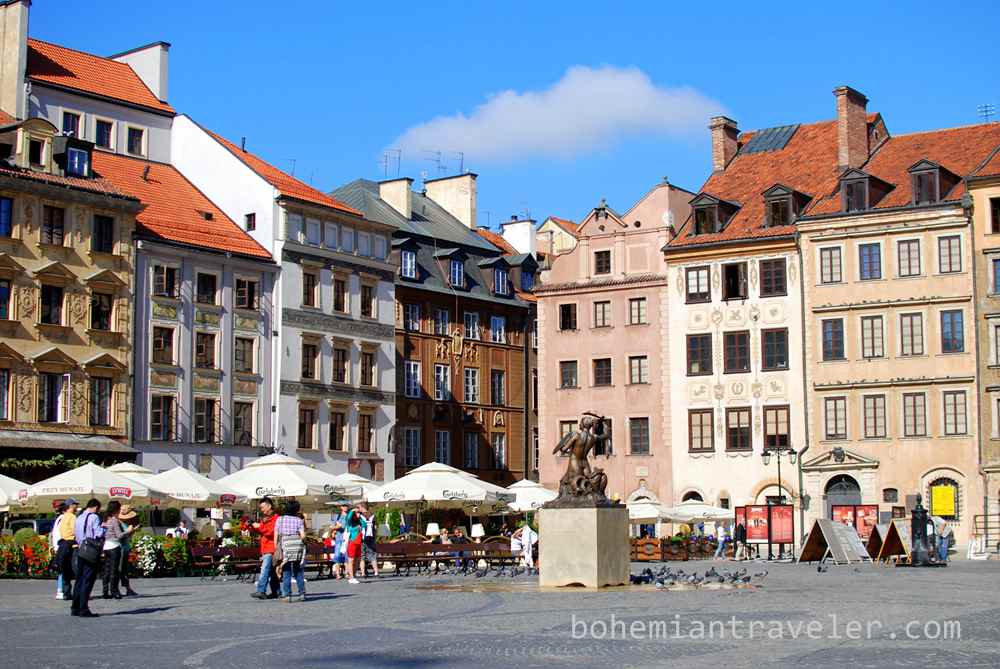From Vilnius, Lithuania, an eight hour bus ride got us to Warsaw Poland. I thought I would be overwhelmed and intimidated by the Polish capital, but I can say that neither was true. Our time was limited and we stuck mostly to the center and the Old Town. Warsaw has an interesting past and a rapidly changing present and a place that merits further exploration.
Meeting Tomas at Castle Square

The afternoon we arrived, we met Tomas at 5pm sharp. He works for Stay Poland, a company that organizes tours and runs a hotel/transportation booking site exclusively for Poland. We were going out for a beer, but would end up getting sidetracked by a few of the sites and stories on our way to the restaurant/bar.
The first thing Tomas told us is that the Poles don’t really have a pub tradition. In Communist times it was the custom to meet at an individual’s house, and linger there for hours. For the neighboring Czechs, however, that would rude. Czechs meet and sit at bars for hours. Slowly over the past 20 years, pubs have sprung up and become popular, although people are still known to throw a good house party.
Tomas led us down a side street not far from Castle Square. Here on the side of the St John’s Archcathedral, a monument of sorts was built into the wall. It was the wheel track from a tank. After the cathedral was destroyed in the war, the exact tank which destroyed it was found, and part of the tank was built into the reconstructed church.
The first thing a visitor to Warsaw should know is that nearly the entire city was razed by the Nazis. The second thing you should know is that it was painstakingly rebuilt after the War—exactly the way it looked in late 18th century! Why the late 18th century?
Rebuilding Warsaw Poland

Tomas explained. “The Venetian painter Bernardo Bellotto came to Poland in 1764 and produced some very detailed paintings of Warsaw. Those were the model for the recreated city.”
Of course the insides were different and Tomas added that the builders weren’t skilled at construction, but just ordinary folks from the countryside. I imagine the pool of skilled workers was greatly reduced by the nearly 6 million casualties suffered by Poland during the Second World War.

On our way to the pub, Tomas pointed out two more peculiarities in Warsaw: the thinnest house in the city (it’s literally the width of a door at its entrance), and St. Kazimierz Church where the Order of the Benedictine Sisters live and worship. They take a vow never to be seen by the public, praying in a separate part of the church.
We insisted on Polish food and Tomas delivered. Gospoda fit the bill. Although relatively on the main tourist drag, it was solicited only by Poles while we visited. Over a couple of local beers, some traditional Zurek soup in a rye bread bowl, and pierogi we discussed tourism in Poland and the ever-changing landscape of social media in the travel-sphere.

On the walk home we passed through the gorgeous marketplace square (totally and gloriously reconstructed) and saw an information kiosk with photos of its destruction after the invasion. Just beyond that were the residence and museum of Marie Curie, the physicist and chemist who showed the world about radioactivity and its effects on humans as well as discovering the elements polonium and radium.

Hmmm. My job took me to LAS a few weeks agao, then ATL this past week and next week I head to MCO. I’m thinking we need a “Freaky Friday”. You go to Disney World and I go to WAW! Deal?